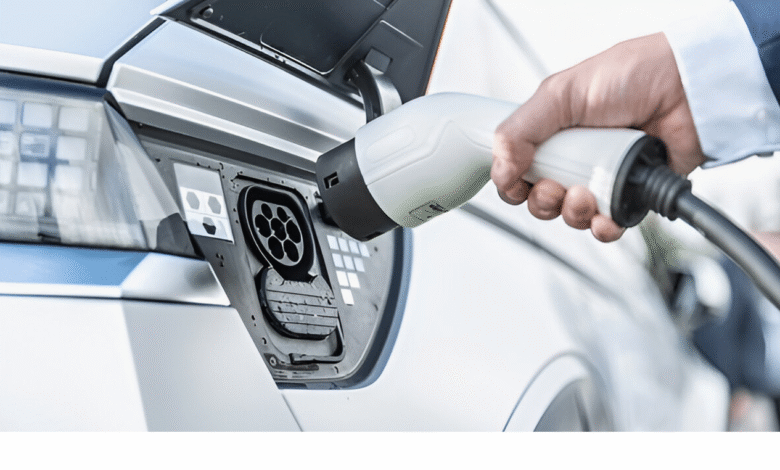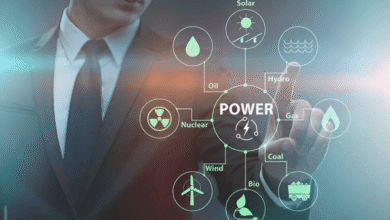
The transition to electric vehicles (EVs) is accelerating across America, making EV charging stations in the U.S. a crucial component of the nation’s transportation future. As more drivers embrace eco-friendly alternatives to gas-powered cars, understanding the charging infrastructure where to find stations, how they operate, and what options are available has never been more important. This comprehensive guide explores the current state of EV Charging Stations in the U.S., covering different charger types, major charging networks, costs, challenges, and future developments.
The growth of EV charging stations in the U.S. reflects the rapid adoption of electric vehicles, supported by government initiatives and private investments. However, for this shift to be successful, drivers need reliable, accessible, and efficient charging solutions. Whether you’re considering an EV Charging Stations purchase or already own one, this guide provides essential insights into the charging infrastructure, helping you make informed decisions about where, when, and how to power your vehicle.
EV Charging Stations in the U.S.
The Evolution of EV Charging Stations Infrastructure in the U.S.
The rise of electric vehicles has spurred significant advancements in charging technology and infrastructure. Over the past decade, the number of EV charging stations in the U.S. has grown exponentially, driven by federal funding, state incentives, and private sector investments. The Biden administration’s Infrastructure Investment and Jobs Act allocated $7.5 billion to expand the national charging network, with a goal of installing 500,000 public chargers by 2030.
Benefits of EV Ownership
Despite this progress, challenges remain. Charging station distribution is uneven, with urban areas and coastal states having far more options than rural regions. Additionally, charging speeds, compatibility issues, and pricing models vary widely, creating confusion for consumers. Understanding the different types of chargers, their locations, and how they function is key to maximizing the benefits of EV ownership.
Basic but Slow
Level 1 charging uses a standard 120-volt household outlet, providing about 2 to 5 miles of range per hour. While this method is convenient for overnight charging at home, it is impractical for drivers who need quick top-ups or frequently travel long distances. Most EV Charging Stations owners who rely solely on Level 1 charging find it insufficient for daily use unless they have minimal driving needs.
The Future of Long-Distance Travel
DC fast chargers (DCFC) are the fastest option available, capable of replenishing 60 to 100 miles of range in just 20 minutes. These high-powered stations, which typically operate at 480 volts or higher, are essential for long road trips and are commonly found along highways and major travel corridors. However, not all EVs support DC fast charging, and frequent use can impact battery longevity over time.
Tesla Supercharger Network
Tesla’s proprietary Supercharger network is one of the most extensive and reliable fast-charging systems in the country. With thousands of stations nationwide, Tesla owners benefit from high-speed charging and seamless integration with their vehicles. Recently, Tesla has begun opening some of its Superchargers to non-Tesla EVs, expanding access for more drivers. Additionally, some workplaces provide complimentary charging for employees. Taking advantage of these opportunities can significantly reduce charging costs.
The Most Common Option
Level 2 chargers operate at 240 volts, significantly reducing charging time compared to Level 1. These stations deliver between 10 and 60 miles of range per hour, making them ideal for home installations, workplaces, and public locations like shopping mall and parking garages. Many EV owners install Level 2 chargers at home for faster overnight charging, while businesses and municipalities deploy them to encourage EV adoption.
Electrify America
Funded by Volkswagen as part of its Dieselgate settlement, Electrify America has rapidly become a leading provider of DC fast charging. Its stations support multiple plug types, including CCS and CHAdeMO, making them accessible to a wide range of EV models. The network is strategically placed along major highways, catering to long-distance travelers. Expanding coverage to these areas is essential for nationwide EV adoption.
ChargePoint
As one of the largest charging networks in the U.S., ChargePoint operates both Level 2 and DC fast chargers. Its stations are commonly found at workplaces, retail locations, and multifamily housing complexes. ChargePoint’s user-friendly app allows drivers to locate, reserve, and pay for charging sessions with ease. Many providers offer subscription plans or pay-as-you-go options, with mobile apps facilitating seamless transactions.
Blink Charging
Blink provides a mix of Level 2 and DC fast chargers, often installed at hotels, restaurants, and shopping centers. While not as widespread as some competitors, Blink is expanding its footprint, particularly in regions with fewer charging options, to help both current and prospective EV owners navigate this evolving landscape. Charging at home is typically the most affordable option, with electricity rates averaging 0.12to0.25 per kWh.
The Future of EV Charging in the U.S.
The future of EV charging stations in the U.S. looks promising, with continued investments and technological advancements paving the way for a more efficient and accessible network. Innovations like ultra-fast charging (350 kW and above), wireless charging, and vehicle-to-grid (V2G) technology are on the horizon, potentially revolutionizing how EVs are powered.
Reliability and Maintenance
Many drivers report encountering broken or malfunctioning chargers, which can disrupt travel plans. Ensuring consistent maintenance and real-time monitoring of stations is critical to improving reliability. While DC fast chargers are quick, they are not as fast as refueling a gas car. During peak travel times, wait times can be frustrating, highlighting the need for more stations and higher-capacity chargers.
Sector Collaborations
Government policies and private sector collaborations will play a crucial role in shaping this future. Federal funding, state incentives, and utility company programs are accelerating charger deployment, while automakers are partnering with charging networks to enhance the driver experience. As battery technology improves and charging times decrease, EV Charging Stations will become even more practical for mainstream consumers.
Read More: How to Manage Finances with the Best Budgeting Apps
Conclusion
The expansion of EV charging stations in the U.S. is a cornerstone of the nation’s shift toward sustainable transportation. While significant progress has been made, challenges such as reliability, accessibility, and charging speed must be addressed to ensure a smooth transition for all drivers. By staying informed about charging options, costs, and technological advancements.
As the infrastructure continues to evolve, the vision of a fully electrified transportation system becomes increasingly attainable. With continued investment, innovation, and collaboration, the U.S. is poised to build a charging network that meets the needs of today’s drivers while preparing for the demands of tomorrow, EV Charging Stations can optimize their experience and contribute to a greener future.
FAQs
How long does it take to fully charge an EV at a public station?
Charging times vary: Level 2 chargers take 4-8 hours for a full charge, while DC fast chargers can reach 80% in 20-40 minutes.
Can all EVs use Tesla Superchargers?
Only Tesla vehicles can use most Superchargers, though Tesla is gradually opening some stations to non-Tesla EVs with adapters.
Is charging an EV cheaper than fueling a gas car?
Yes, charging is generally cheaper averaging 0.12−0.25 per kWh at home compared to gas prices but public fast charging can be more expensive.
Are there enough EV Charging Stations for long road trips?
Major highways have sufficient fast chargers, but rural areas may still have gaps. Planning ahead using apps like PlugShare is recommended.
What’s being done to improve the U.S. charging network?
The federal government is investing $7.5 billion to expand charging infrastructure, with goals to install 500,000 public chargers by 2030.











